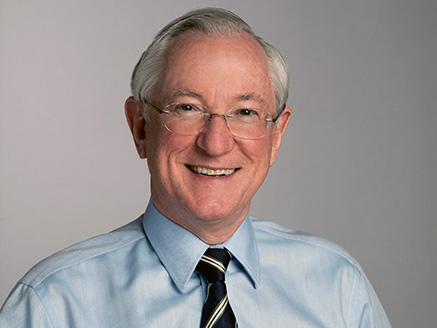Director’s Message
Dear Friends,
We live in an increasingly interconnected world, one in which events in one region can have wide-ranging and often unanticipated consequences for others. Interactions between the atmosphere and ocean in the tropics, for instance, can change the patterns of severe storms and heat waves at higher latitudes, and the greenhouse gases from populated areas are driving climate change most rapidly near Earth’s poles.
Our work at Lamont-Doherty Earth Observatory is providing the scientific foundation for understanding global risks, recognizing their environmental causes and consequences, and making better choices that can reduce their future impact.

Sean Solomon, Director
In 2015, our scientists developed new models for understanding and assessing the risks of extreme weather. They explored changes in ocean temperature and acidity that are affecting marine ecosystems and the ocean food web. They developed drought atlases that track natural climate swings through millennia, and, with those findings and other evidence, they have shown how many of today’s changes are happening too fast to be the result of natural climate variability alone. In one study, Park Williams and his colleagues developed the first quantitative assessment of the role that human activities, particularly the burning of fossil fuels, likely played in the California drought.
Many of the global challenges our research is addressing are current topics in the news. Mass migration, for example, can start from years of drought stress that cascades into conflict over increasingly scarce water resources and growing poverty. This general pattern is a recurrent one throughout history. We’ve seen a modern example in Syria, where years of drought pushed a rural migration to the cities, exacerbating poverty and civil unrest that eventually contributed to the waves of refugees now fleeing to Europe. A study by Mark Cane, Richard Seager, Yochanan Kushnir, and their colleagues explained how a drought this severe was rendered more than twice as likely to occur by human contributions to the climate system.
This type of knowledge can aid world leaders to recognize similar warning signs in the future.
Rising sea levels pose another global challenge. Maureen Raymo, Robin Bell, and other Lamont scientists are studying historic sea level rise and complex interactions between warming waters and melting ice sheets to understand how sea level will rise in the future and where communities are most at risk. Raymo and Bell are also leading one of five Lamont initiatives that are bringing together expertise from across sectors and around the world to tackle global problems.
The achievements described in this report and underway across Lamont-Doherty Earth Observatory every day are made possible, in part, by the many friends, alumni, and staff who provide continued support for our research and educational endeavors. Your contributions enable us to deepen our understanding of our home planet and enhance our collective ability to address the most complex environmental challenges ahead. We deeply appreciate the generosity of our donors and all that their gifts make possible.
Thank you for your support.
Sean C. Solomon
Director